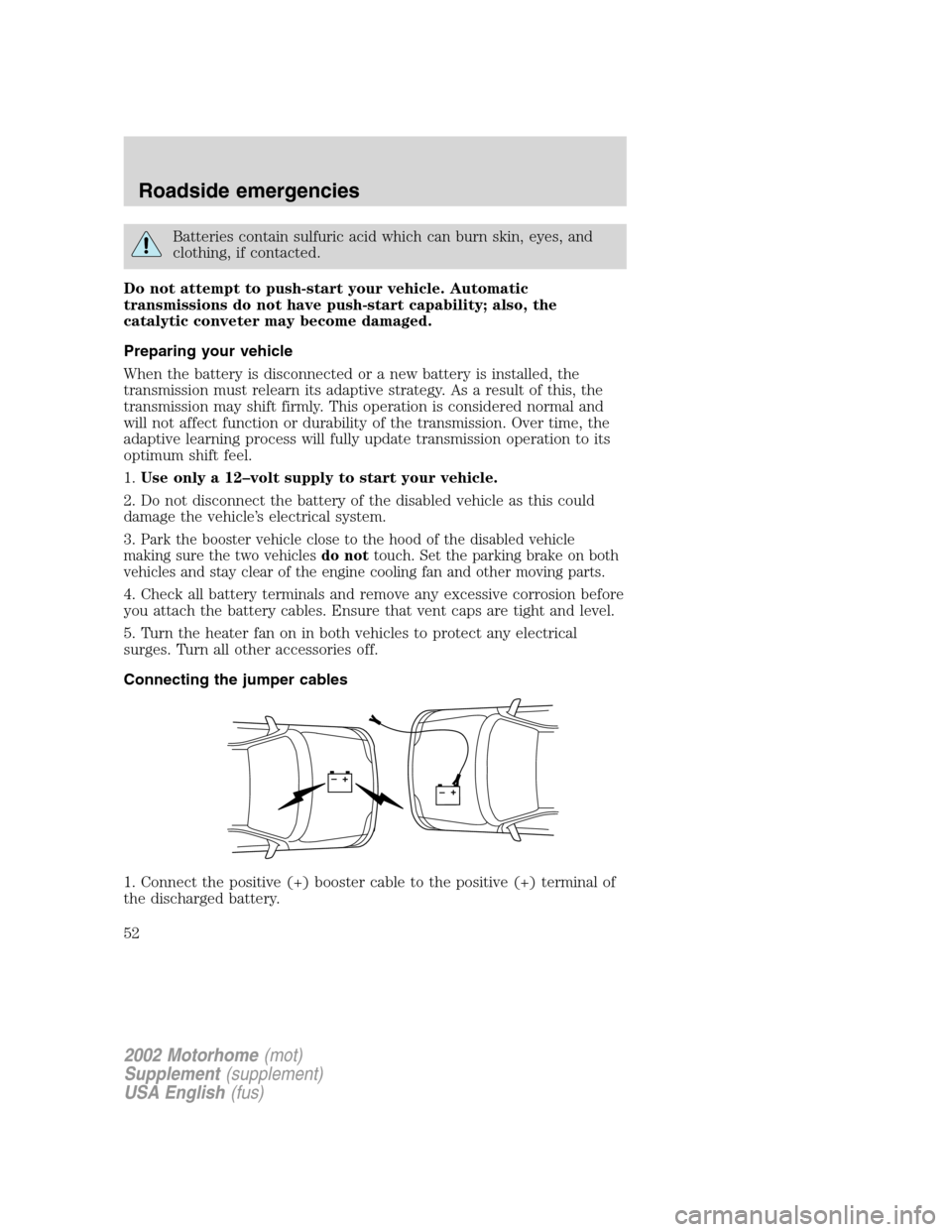Page 25 of 104

3. If the temperature is below -12° C (10° F) and the engine does not
start in 15 seconds on the first try, turn the key OFF and wait 10
seconds and try again. If the engine does not start in two attempts, press
the accelerator pedal all the way to floor and hold. Turn the key to
START position.
4. When the engine starts, release the key, then release the accelerator
pedal gradually as the engine speeds up.
5. After idling for a few seconds, apply the brake and release the parking
brake.
Using the engine block heater (if equipped)
An engine block heater warms the engine coolant, which improves
starting, warms up the engine faster and allows the heater-defroster
system to respond quickly. Use of an engine block heater is strongly
recommended if you live in a region where temperatures reach -23° C
(-10° F) or below.
For best results, plug the heater in at least three hours before starting
the vehicle. Using the heater for longer than three hours will not harm
the engine, so the heater can be plugged in the night before starting the
vehicle.
To prevent electrical shock, do not use your heater with
ungrounded electrical systems or two-pronged (cheater)
adapters.
Guarding against exhaust fumes
Although odorless and colorless, carbon monoxide is present in exhaust
fumes. Take precautions to avoid its dangerous effects.
If you ever smell exhaust fumes of any kind inside your vehicle,
have your dealer inspect and fix your vehicle immediately. Do
not drive if you smell exhaust fumes. These fumes are harmful and
could kill you.
Have the exhaust and body ventilation systems checked whenever:
•the vehicle is raised for service
•the sound of the exhaust system changes
•the vehicle has been damaged in a collision
Driving
25
Page 52 of 104

Batteries contain sulfuric acid which can burn skin, eyes, and
clothing, if contacted.
Do not attempt to push-start your vehicle. Automatic
transmissions do not have push-start capability; also, the
catalytic conveter may become damaged.
Preparing your vehicle
When the battery is disconnected or a new battery is installed, the
transmission must relearn its adaptive strategy. As a result of this, the
transmission may shift firmly. This operation is considered normal and
will not affect function or durability of the transmission. Over time, the
adaptive learning process will fully update transmission operation to its
optimum shift feel.
1.Use only a 12–volt supply to start your vehicle.
2. Do not disconnect the battery of the disabled vehicle as this could
damage the vehicle’s electrical system.
3.
Park the booster vehicle close to the hood of the disabled vehicle
making sure the two vehiclesdo nottouch. Set the parking brake on both
vehicles and stay clear of the engine cooling fan and other moving parts.
4. Check all battery terminals and remove any excessive corrosion before
you attach the battery cables. Ensure that vent caps are tight and level.
5. Turn the heater fan on in both vehicles to protect any electrical
surges. Turn all other accessories off.
Connecting the jumper cables
1. Connect the positive (+) booster cable to the positive (+) terminal of
the discharged battery.
+–+–
2002 Motorhome(mot)
Supplement(supplement)
USA English(fus)
Roadside emergencies
52
Page 102 of 104

check engine/
service engine soon light ...........7
cleaning .....................................58
coolant .......................................65
fail-safe coolant ........................70
idle speed control .....................63
lubrication specifications ...97, 99
refill capacities ..........................95
service points ............................60
starting after a collision ...........39
Engine block heater ...................25
Engine oil ....................................61
checking and adding ................61
dipstick ......................................61
filter, specifications ............62, 95
recommendations .....................62
refill capacities ..........................95
specifications ......................97, 99
Exhaust fumes ............................25
F
Fail safe cooling ..........................70
Fluid capacities ...........................95
Fuel ..............................................72
calculating fuel economy .........78
capacity .....................................95
choosing the right fuel .............74
comparisons with EPA fuel
economy estimates ...................81
detergent in fuel .......................75
filling your vehicle
with fuel ..............................72, 78
filter, specifications ............76, 95
fuel pump shut-off switch .......39
gauge .........................................13
improving fuel economy ..........78
low fuel warning light ..............10
octane rating .......................74, 99
quality ........................................75running out of fuel ...................75
safety information relating
to automotive fuels ..................72
Fuses ............................................41
G
Gas mileage
(see Fuel economy) ...................78
Gauges .........................................11
battery voltage gauge ...............13
engine coolant
temperature gauge ...................12
engine oil pressure gauge ........12
fuel gauge ..................................13
odometer ...................................14
speedometer .............................13
tachometer ................................14
trip odometer ............................14
GAWR (Gross Axle
Weight Rating) ............................34
calculating .................................35
definition ...................................34
driving with a heavy load ........34
location ......................................34
GVWR (Gross Vehicle
Weight Rating) ............................34
calculating ...........................34–35
definition ...................................34
driving with a heavy load ........34
location ......................................34
H
Hazard flashers ...........................39
Headlamps ...................................15
daytime running lights .............15
flash to pass ..............................16
high beam ...........................11, 15
turning on and off ....................15
warning chime ..........................11
Index
102